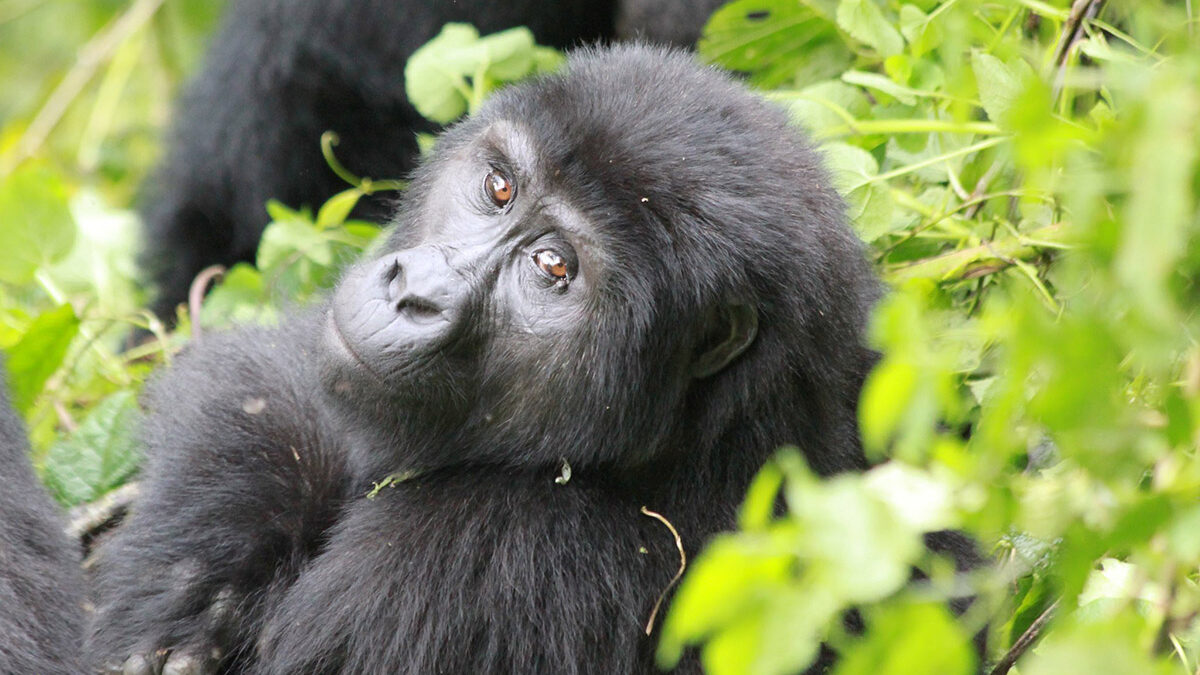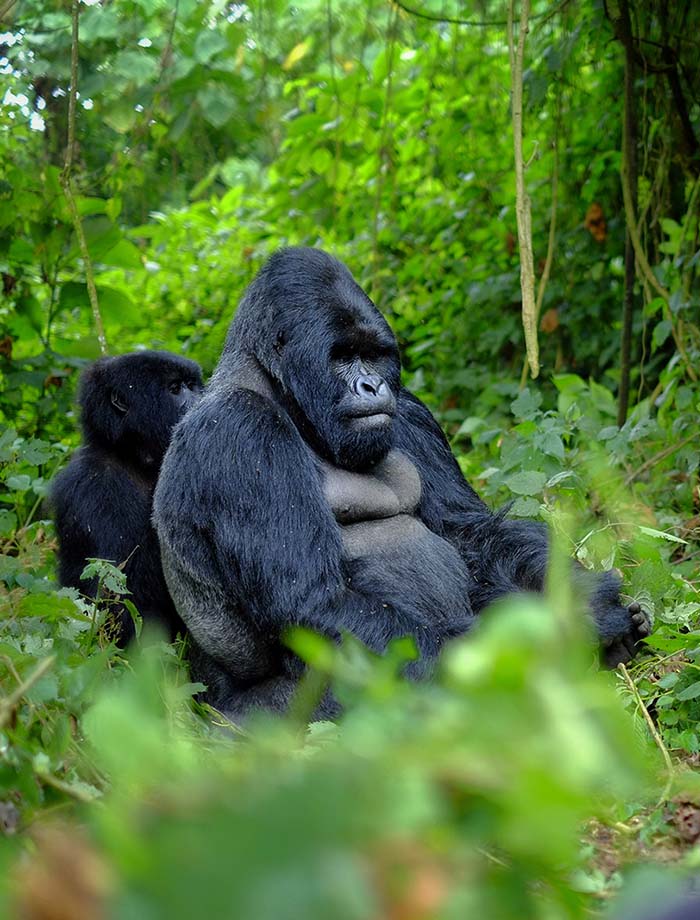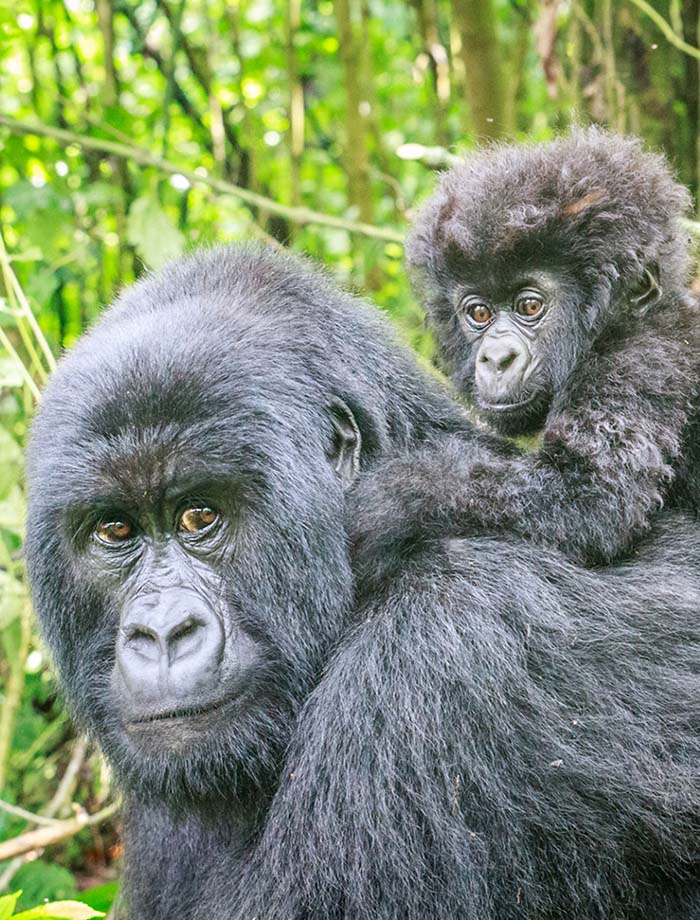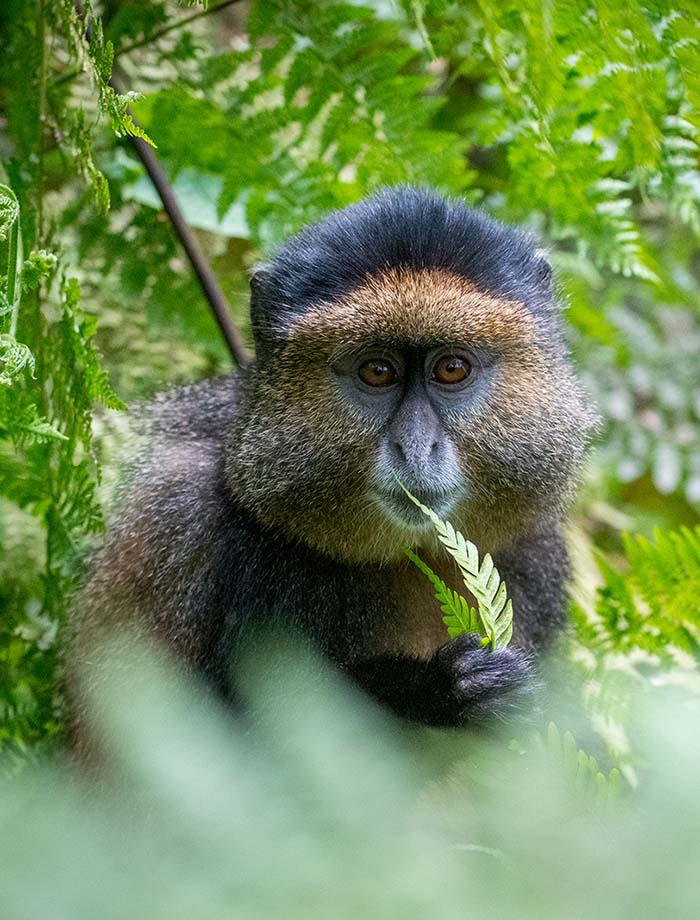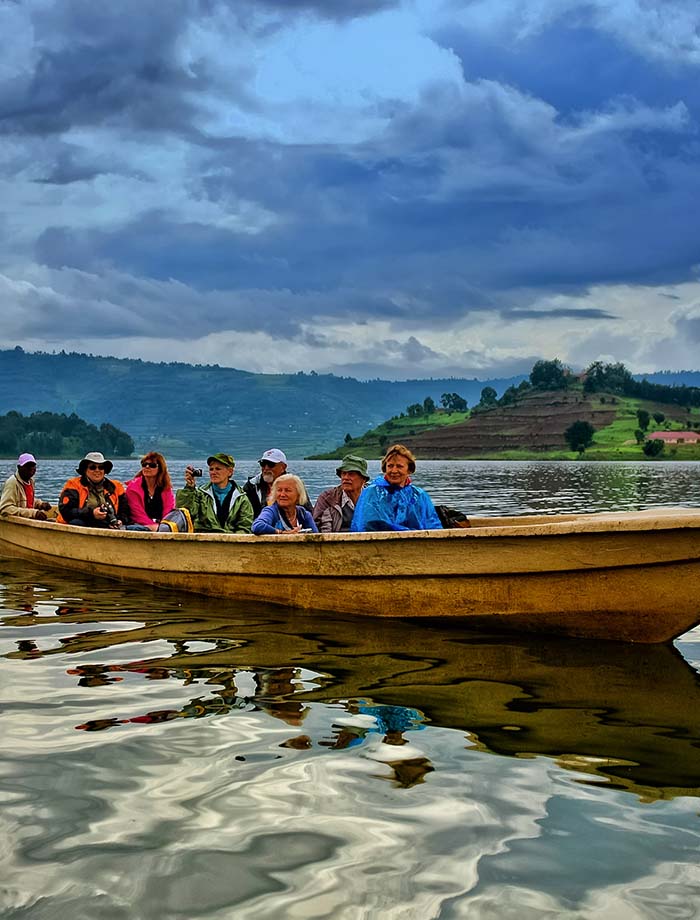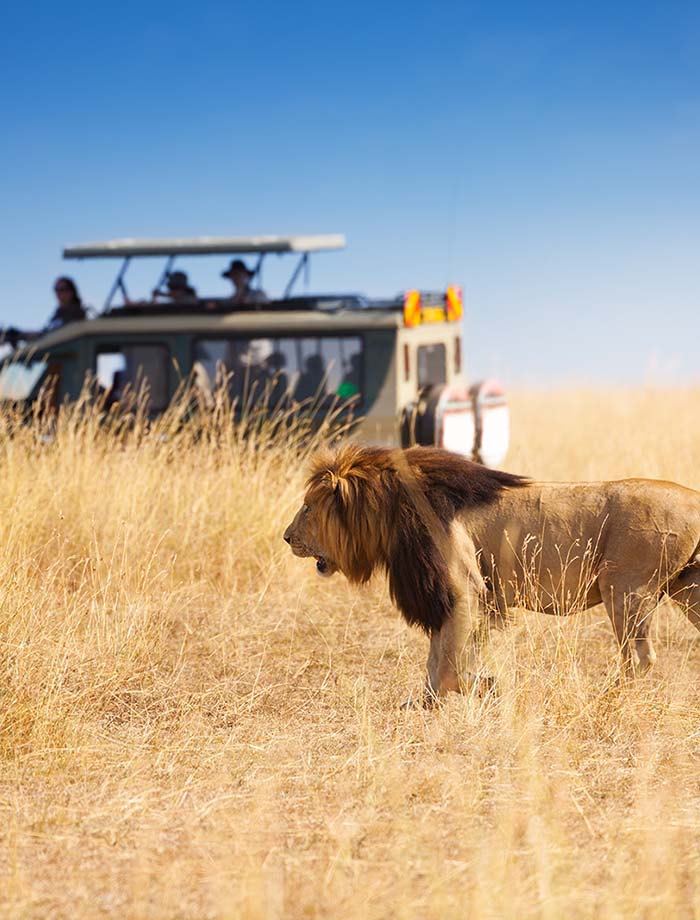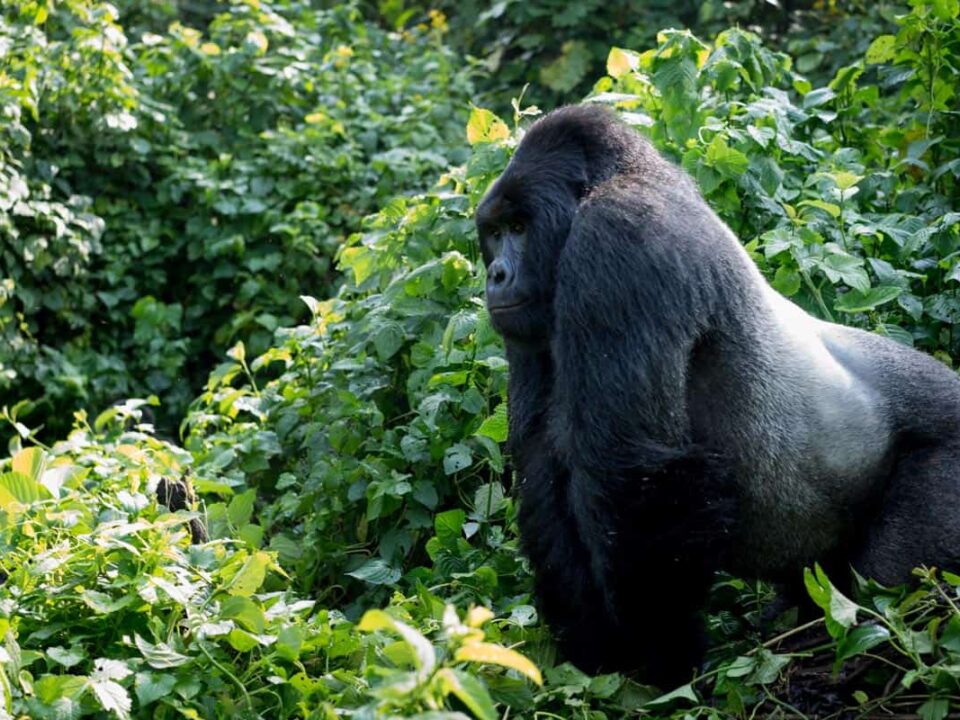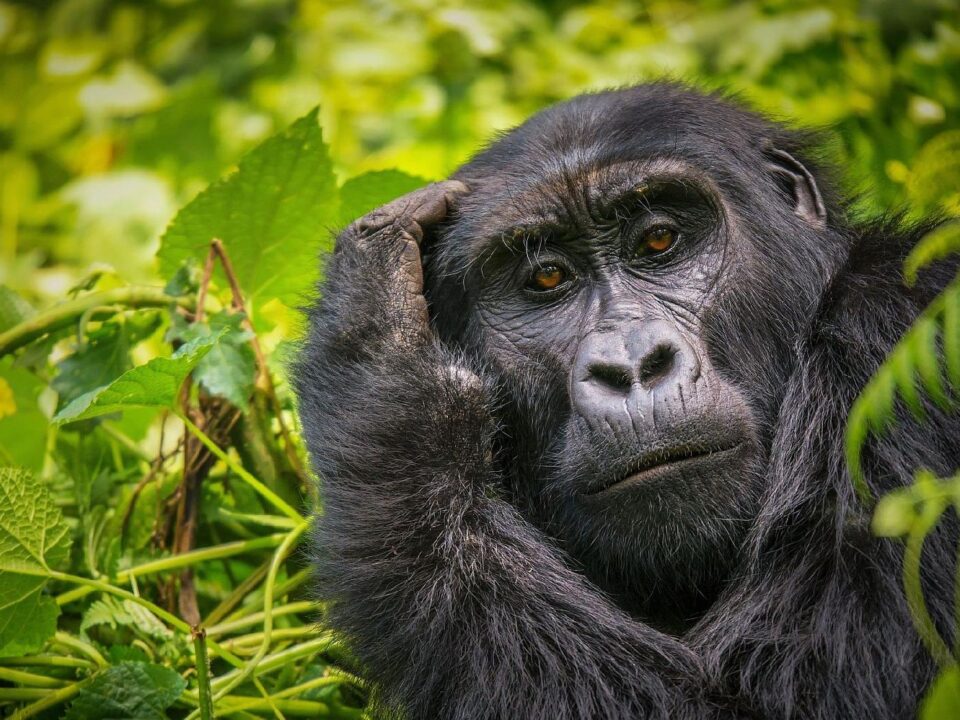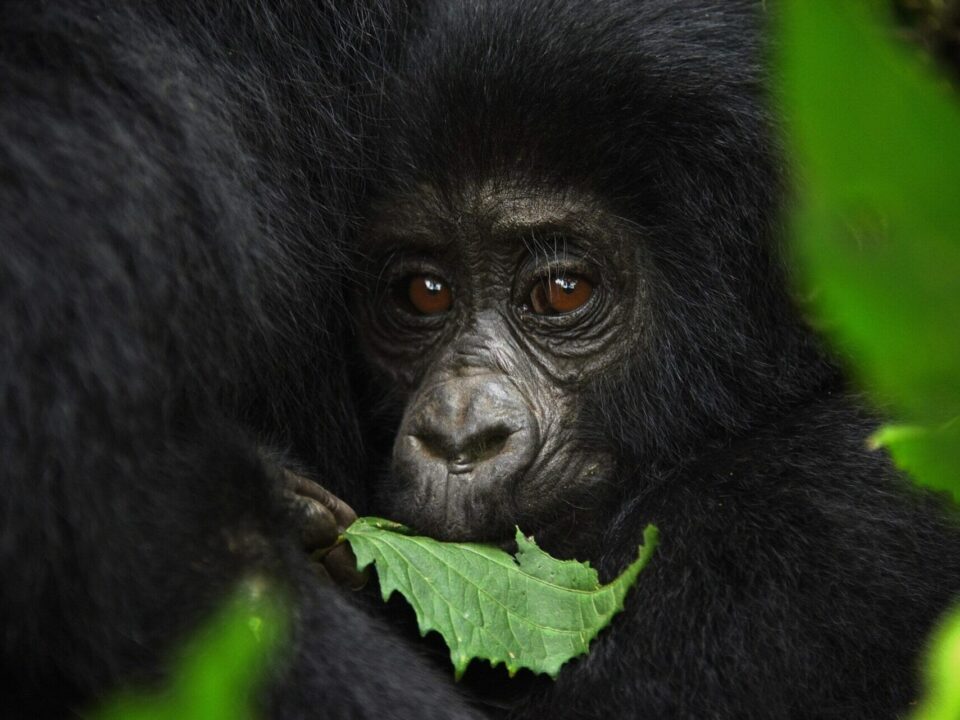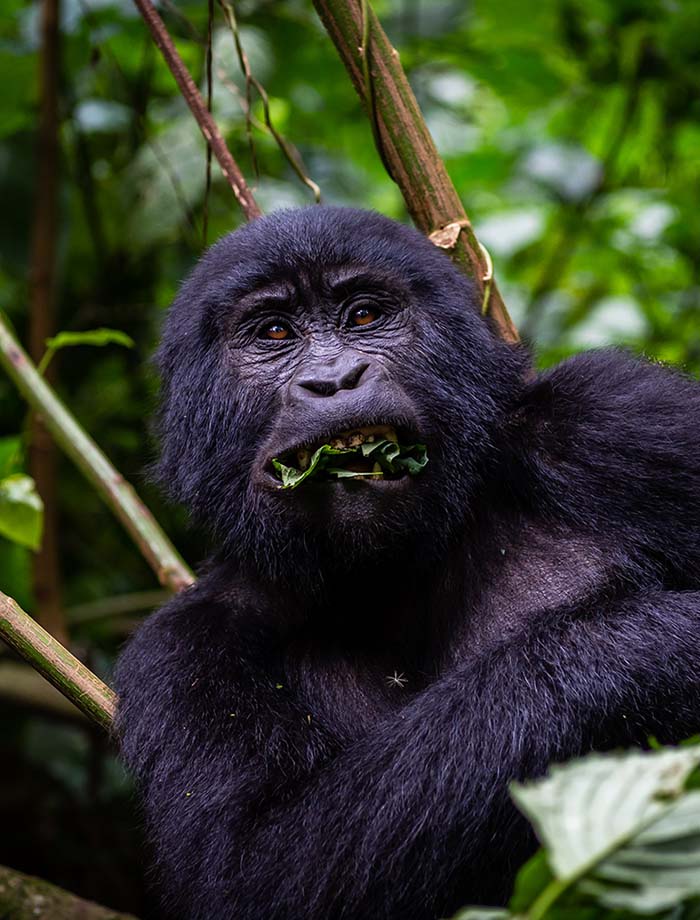
Facts about the Mountain Gorilla

Gorilla Trekking in Rwanda vs Uganda
May 20, 2020It is one thing to read about the Mountain Gorillas it is another thing to be with them for one hour, or in Uganda where you can be on a Gorilla Habituation Experience which means that you are with a gorilla family for 4 hours. Gorilla Visitors make the Conservation of the endangered Mountain Gorillas is made possible by the permit fees that are paid. Even the local communities benefit and begin to support Gorilla Tourism and the conservation of the Mountain Gorillas. You cannot see Mountain Gorilla anywhere else in Africa, it is only in Uganda and Rwanda where you can do it safely.
Gorilla trekking has been widely acknowledged as one of the most exhilarating and venerated safari adventures on the planet. Looking in the eyes of the gentle giants and one of the most endangered great apes in their natural habitat is what every traveler longs for.
The endangered mountain gorilla is only found in Uganda, Rwanda and Democratic Republic of Congo and its population is estimated to be not more than 880 gorillas according to the 2012 census of which half is in Uganda. According to the results from the census, Bwindi Impenetrable National Park has 400 gorillas while Mgahinga Gorilla National Park has 80 gorillas that often roam between Congo, Rwanda and Uganda. In total Uganda has 480 gorillas that live in 39 families or groups though only 13 are habituated.
The survival to the mountain gorilla generation in the Volcanoes National Park in Rwanda is greatly accredited to the foundation and campaign laid by the American zoologist who started her arduous research about the species in 1967 and carried on up to her poignant murder in 1985 at a place that was later to be known as Karisoke in the current Volcanoes National Park.
Rwanda shelters a population of about 320 gorillas according to the last census and the remaining are in Democratic Republic of Congo. It is however important to note that the Mountain gorillas in the three countries are in two categories; those habituated and those which are not (wild). Tracking is done only to those, which are habituated and are not bothered about the presence of tourists.
Following the frequent insurgencies in the Democratic Republic of Congo, the Virunga national park that shelters these gentle apes was closed and regarded unsafe for tourists since last year. This left this breathtaking gorilla safari adventure to be only done in Uganda and Rwanda.
The tracking rules are all the same in both countries where by only one hour is allowed for a tourist to look in the eye of the endangered Mountain Gorilla. Not more than 8 people are allowed to visit any particular gorilla group in a day in order to show respect and avoid any negative social or psychological impact on the life of a gorilla.
Uganda currently has 12 habituated Gorilla groups for tracking and one for research. The Gorilla families include;
Mubare, Habinyanja, and Rushegura families in Buhoma section, while Ruhija section shelters Bitukura and Oruzogo families and Nkuringo family is the only one in Nkuringo area. Nshongi, Mishaya, Kahungye, Bweza and Busingye families inhabit Rushaga area and the last family of Nyakagezi inhabits the Mgahinga Gorilla National park. Nyakagezi used to roam across borders of the 3 countries, but when the family got a baby, they settled on Ugandan side.
The Kyaguriro Gorilla family in Ruhija area has been set apart for research and is always used to learn more about the life of the Mountain Gorilla.
Rwanda on the other hand, has 10 gorilla families, allowing up to 80 gorilla permits per day. The families include;
The Susa family that was originally studied by Dian Fossey and inhabits the slopes of Mt. Karisimbi together with Susa B (Karisimbi family) that broke away from Susa. Sabinyo family which is the smallest and most easily accessed on the slopes of Mt. Sabinyo, Amahoro family known as the most peaceful of all families and Umubano family which broke away from Amahoro. The 13 group also Known as Agashya family, Kwitonda family, Hirwa family, Bwenge and Ugenda families are the other gorilla families in this ‘Land of a thousand hills’.
The mountain gorilla, a large, strong ape inhabiting Africa’s volcanic slopes, has few natural predators. Yet due to detrimental human activity, such as poaching, civil war, and habitat destruction, the mountain gorilla, a subspecies of the eastern gorilla, has become the most endangered type of gorilla.
Currently, the mountain gorilla’s habitat is limited to protected national parks in two regions of Africa. One group of gorillas lives in the Bwindi Impenetrable National Park in Uganda. The other group is spread over three national parks in the Virunga mountain region of the Democratic Republic of Congo, Uganda, and Rwanda.
Mountain gorillas are as shy as they are strong. But when threatened, they can be aggressive. They beat their chests and let out angry grunts and roars. Group leaders will charge at the threat. Mothers will fight to the death to protect their young.
Mountain gorillas live in groups of up to 30. The group, or troop, is led by a single alpha male, an older silverback. These males are called silverbacks because of the silver stripe they develop on their backs when they mature. The oldest males of the group are at least 12 years old. These troops also include several younger males, adult and juvenile females, and infants.
In addition to providing protection to group members, silverbacks maintain order and decide all activities within their troop. They schedule feeding trips, resting time, and travel. They also father the majority of the young in the group.
Female mountain gorillas can produce young beginning at age 10. They carry one or two babies at a time and give birth after a 8.5-month gestation period. In general, they will bear between two and six offspring in a lifetime.
Mountain gorilla and baby
Newborn gorillas weigh about 1.8 kg (4 lb.) at birth. They are as weak and uncoordinated as human babies. For the first four years of their lives, they get around by clinging to their mothers backs. By 3.5 years of age, the young gorillas are fully weaned from their mothers milk and start the same diet as mature mountain gorillas: plants, leaves, roots and shoots.
Fully-grown male mountain gorillas can weigh up to 180 kg (400 lb). Females weigh half that at about 90 kg ( 200 lb). Aside from the silver stripe on their backs, male mountain gorillas are distinguished from females because they have a crest of fur on their heads. Both genders have similar thick black hair covering their body. Their thick hair keeps them warm in cold mountain temperatures.
1. Gorillas share human DNA.
Gorillas are special primates sharing over 98% of their DNA with humans.
2. Mountain gorillas live only in Africa and are distributed into two populations.
One gorilla population is found in the Virunga volcanic mountains of East Africa within three national parks: Mgahinga, in south-west Uganda, Volcanoes in north-west Rwanda and Virunga in the eastern Democratic Republic of Congo (DRC). The other is found in Uganda’s Bwindi Impenetrable National Park.
3. Some primatologists consider the Bwindi gorilla population in Uganda as a separate subspecies.
However, there is no description that has been concluded to ascertain this.
4. Mountain gorillas are as shy as they are strong.
Locals living near Bwindi Impenetrable National Park know this for a fact! A mountain gorilla will never chase you when you are facing it and looking directly into its eyes. However, you should know that when threatened they can be aggressive. They beat their chests and let out angry grunts and roars. Group leaders will charge at the threat and mothers will fight to the death to protect their young.
5. Mountain gorillas live in groups of up to 30.
The largest gorilla group or family ever studied is in Rwanda and is led by Cantsbee (now 38 years old!), who is the oldest known mountain gorilla in the whole world. A gorilla family is led by a silverback. These troops also include several younger males, adult and juvenile females, and infants.
6. Aged male gorillas are called silverbacks
This name originates from the silver stripe they develop on their backs when they mature. The silver hair can be compared to the grey hair that humans develop.
7. The silverback gorillas ensure protection of the group.
In addition to providing protection to group members, silverbacks maintain order and decide all activities within their troop. They schedule feeding trips, resting time, and travel. They also father the majority of the young in the group.
8. Female mountain gorillas can start reproducing from the age of ten.
They carry one or two babies at a time and give birth after an eight and a half-month gestation period. In general, they will bear between two and six offspring in a lifetime.
Would you like to see the mountain gorillas in the wild? Why not book a gorilla safari and meet these endangered giants in the wild of Uganda, Rwanda and the Democratic Republic of Congo. Gorilla safaris are done all year round and our trips can depart anytime.
- There are just about 900 mountain gorillas left in the world and can only be found in Uganda, Rwanda and DRC .
- They have 98% DNA match with Humans which makes them close relatives
- They are the largest primates in the world with females weighing about 200 pounds and the males double that figure.
- Gorillas have human emotions and can laugh when tickled and cry when hurt.
- They eat about 50 pounds a day for males
- Gorillas rarely drink water as they get much of their water from the plants they feed on.
- They use vines’ branches and leaves to form baby beds
- A baby gorilla weighs about 4.5 pounds.
- Gorillas stay in families just like humans. Families have up to 20 members.
- Gorillas usually walk on four limbs and only use only their feet for a short while.
- Its weird that these primates don’t have tails.
- Gorillas are very intelligent and those that have been habituated have been taught sign language to communicate with humans.
- Gorillas build a sleeping nest every evening and occasionally one for the midday nap.
- When a male matures its back hair turns silver hence being called “silver back”.
- Gorillas have a life expectancy of up to 53 years.
- Female gorillas reach a breeding stage after 10 years.
- Females normally give birth every after 4-5 years with a gestation period of 8-9 months
Suggested Gorilla Safari Ideas
The tours featured throughout our website are intended to give you ideas for what’s possible when you travel with us. Treat them simply as inspiration, because your trip will be created individually by one of our specialists to match your tastes and budget.

